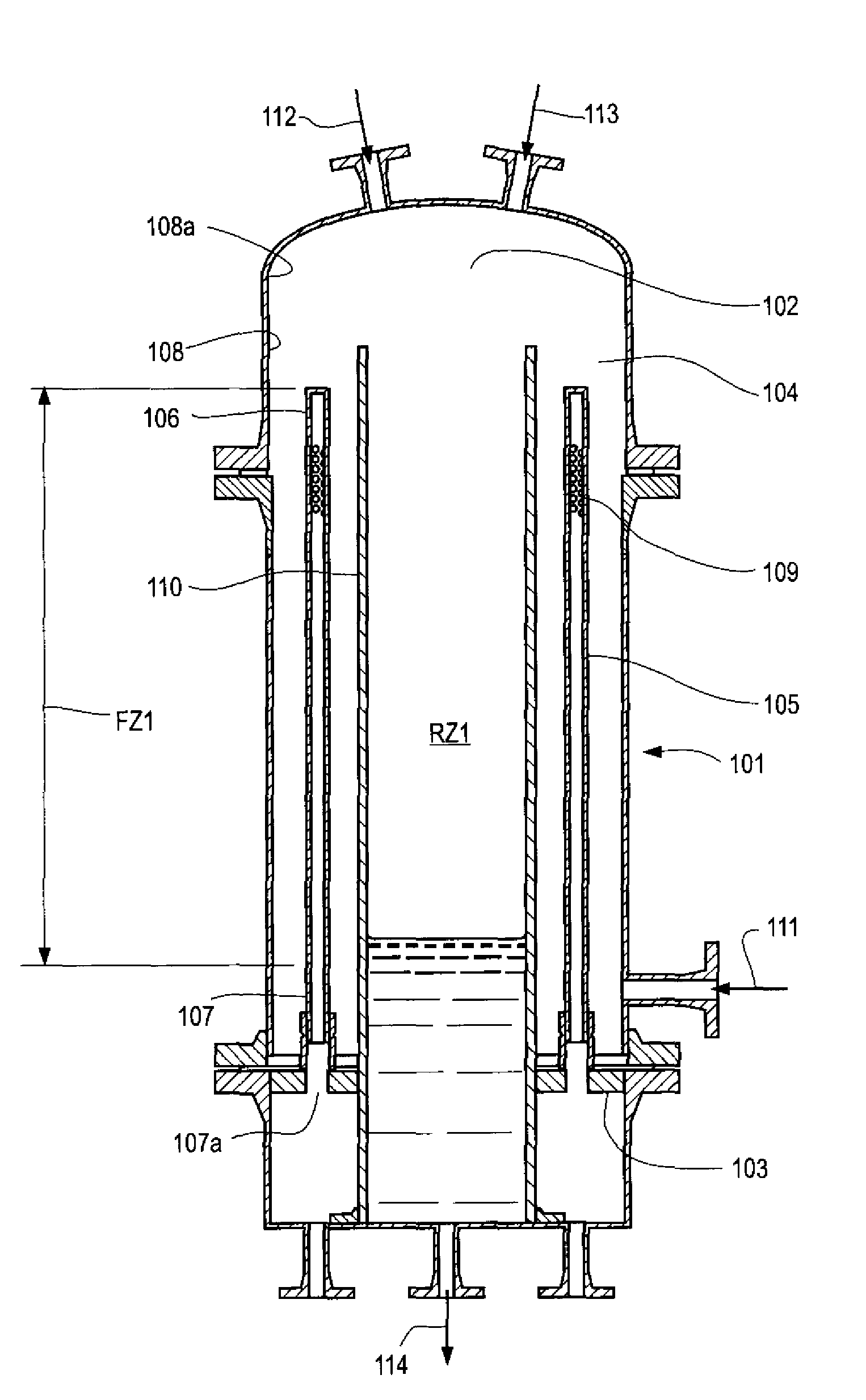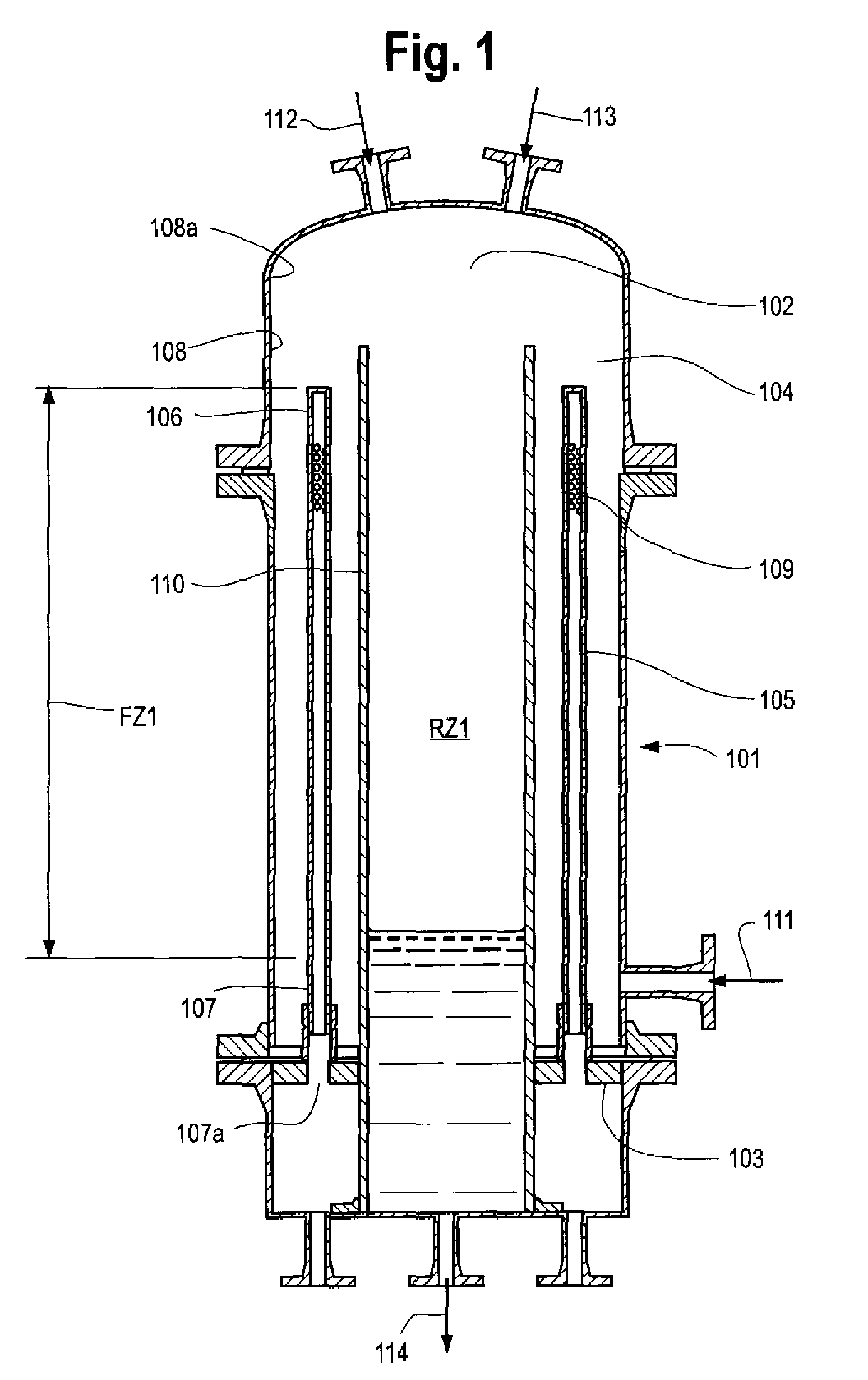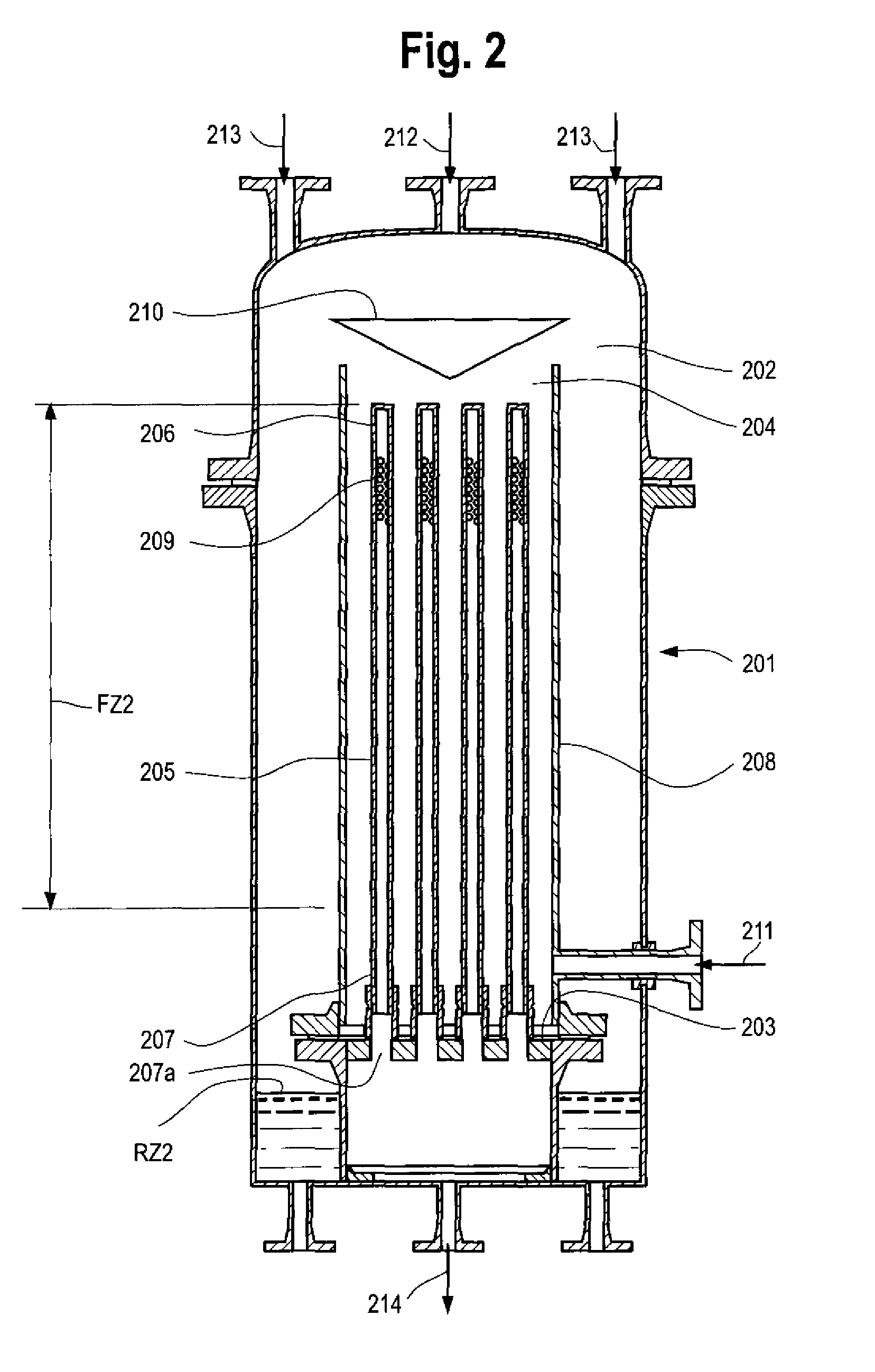Apparatus and process for the separation of solids and liquids
a technology of solids and liquids, applied in the field of filter column apparatuses, can solve the problems of high cost of equipment and equipment, and inability to meet the needs of the purification process,
- Summary
- Abstract
- Description
- Claims
- Application Information
AI Technical Summary
Benefits of technology
Problems solved by technology
Method used
Image
Examples
examples
[0093]The following examples are presented to illustrate a process for the recovery and purification of paraxylene substantially in accordance with the present invention and FIG. 3. The following parameters were measured or calculated from measured variables. (1) the weight percent of paraxylene in the solid-liquid stream; (2) the weight percent of solids in the solid-liquid stream; (3) the temperature of the solid-liquid stream; (4) the weight percent of paraxylene in the filtrate; (5) the weight percent of solids in the filtrate; (6) the temperature of the filtrate; (7) the weight percent of paraxylene in the cake; (8) the weight percent of liquid in the cake; and (9) the temperature of the cake. The temperature of the cake was not measured for the third example.
[0094]Examples 1 and 2 utilized a filter column having an inside diameter of 6 inches. The column contained a single filter tube approximately 29 inches in length. The outside diameter of the filter tube was 2.375 inches. ...
PUM
| Property | Measurement | Unit |
|---|---|---|
| weight percent | aaaaa | aaaaa |
| weight percent | aaaaa | aaaaa |
| weight percent | aaaaa | aaaaa |
Abstract
Description
Claims
Application Information
 Login to View More
Login to View More - R&D
- Intellectual Property
- Life Sciences
- Materials
- Tech Scout
- Unparalleled Data Quality
- Higher Quality Content
- 60% Fewer Hallucinations
Browse by: Latest US Patents, China's latest patents, Technical Efficacy Thesaurus, Application Domain, Technology Topic, Popular Technical Reports.
© 2025 PatSnap. All rights reserved.Legal|Privacy policy|Modern Slavery Act Transparency Statement|Sitemap|About US| Contact US: help@patsnap.com



